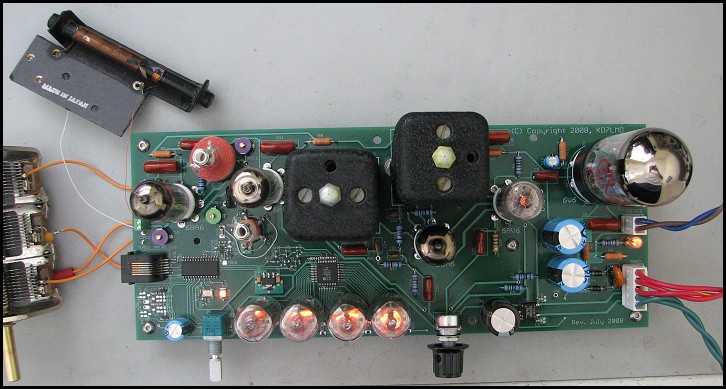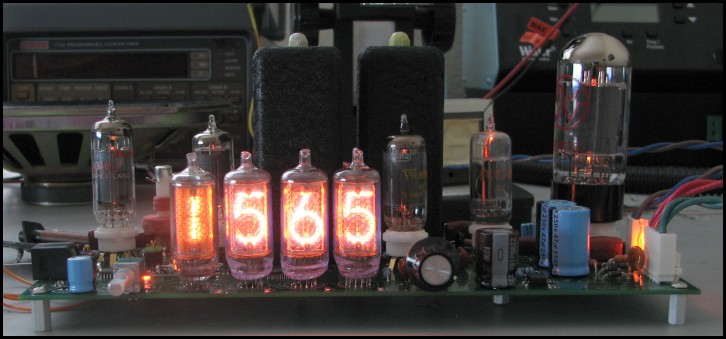|
|
AM Tube Radio
Going Old School, Retro with an AM Tube Radio using modern components. With the exception of some of the tubes, all the components are in-production and available through Mouser or Digikey. The design is based on the AA5 (All American Five). The AA5 was a mass-produced, superheterodyne radio with five vacuum tubes first designed and produced in the USA starting in the 1930s through the end of the vacuum tube era in the early 1970s. This design is closer to an AA6 (six tubes) because it includes an RF gain stage.
The Nixie Tubes display the measured frequency of the LO (Local Oscillator) minus the IF frequency of 456KHz.

Initial system testing.
Shown below is an overhead view of the radio. On the left-hand side, the tuning capacitor and ferrite rod antenna are shown. The antenna is connected using screw terminals to allow for alternate antennas to be connected. On the right-hand side, the speaker and transform power are connected using Molex style connectors. The connectors allows for easy testing and experimenting.

Top view of the design.
Shown below is the front view of the radio in a dark room with a long camera exposure to capture the glow of the tubes. Note the filaments' glow near the top of each tube. The Nixie tubes are a bright neon orange with a slight blue around the edge of each digit. The blue is caused by the mercury in the tube that extend their operational life. Despite the dire reports of the environmentalists, Mercury isn't as evil as it is made out to be.

Front view.
|





